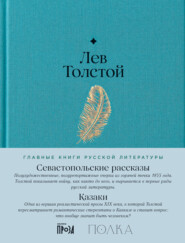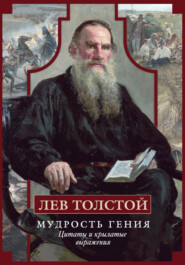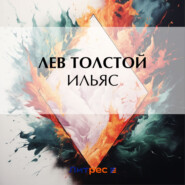По всем вопросам обращайтесь на: info@litportal.ru
(©) 2003-2024.
✖
The Kingdom of God is Within You; What is Art?
Настройки чтения
Размер шрифта
Высота строк
Поля
In order to write poems a man of literary talent needs only these qualifications: to acquire the knack, conformably with the requirements of rhyme and rhythm, of using, instead of the one really suitable word, ten others meaning approximately the same; to learn how to take any phrase which, to be clear, has but one natural order of words, and despite all possible dislocations still to retain some sense in it; and lastly, to be able, guided by the words required for the rhymes, to devise some semblance of thoughts, feelings, or descriptions to suit these words. Having acquired these qualifications, he may unceasingly produce poems – short or long, religious, amatory, or patriotic, according to the demand.
If a man of literary talent wishes to write a story or novel, he need only form his style —i. e. learn how to describe all that he sees – and accustom himself to remember or note down details. When he has accustomed himself to this, he can, according to his inclination or the demand, unceasingly produce novels or stories – historical, naturalistic, social, erotic, psychological, or even religious, for which latter kind a demand and fashion begins to show itself. He can take subjects from books or from the events of life, and can copy the characters of the people in his book from his acquaintances.
And such novels and stories, if only they are decked out with well-observed and carefully noted details, preferably erotic ones, will be considered works of art, even though they may not contain a spark of feeling experienced.
To produce art in dramatic form, a talented man, in addition to all that is required for novels and stories, must also learn to furnish his characters with as many smart and witty sentences as possible, must know how to utilize theatrical effects, and how to entwine the action of his characters so that there should not be any long conversations, but as much bustle and movement on the stage as possible. If the writer is able to do this, he may produce dramatic works one after another without stopping, selecting his subjects from the reports of the law courts, or from the latest society topic, such as hypnotism, heredity, etc., or from deep antiquity, or even from the realms of fancy.
In the sphere of painting and sculpture it is still easier for the talented man to produce imitations of art. He need only learn to draw, paint, and model – especially naked bodies. Thus equipped he can continue to paint pictures, or model statues, one after another, choosing subjects according to his bent – mythological, or religious, or fantastic, or symbolical; or he may depict what is written about in the papers – a coronation, a strike, the Turko-Grecian war, famine scenes; or, commonest of all, he may just copy anything he thinks beautiful – from naked women to copper basins.
For the production of musical art the talented man needs still less of what constitutes the essence of art, i. e. feeling wherewith to infect others: but on the other hand, he requires more physical, gymnastic labor than for any other art, unless it be dancing. To produce works of musical art, he must first learn to move his fingers on some instrument as rapidly as those who have reached the highest perfection; next, he must know how in former times polyphonic music was written, must study what are called counterpoint and fugue; and, furthermore, he must learn orchestration, i. e. how to utilize the effects of the instruments. But once he has learned all this, the composer may unceasingly produce one work after another; whether programme-music, opera, or song (devising sounds more or less corresponding to the words), or chamber music, i. e. he may take another man's themes and work them up into definite forms by means of counterpoint and fugue; or, what is commonest of all, he may compose fantastic music, i. e. he may take a conjunction of sounds which happens to come to hand, and pile every sort of complication and ornamentation on to this chance combination.
Thus, in all realms of art, counterfeits of art are manufactured to a ready-made, prearranged recipe, and these counterfeits the public of our upper classes accept for real art.
And this substitution of counterfeits for real works of art was the third and most important consequence of the separation of the art of the upper classes from universal art.
CHAPTER XII
In our society three conditions coöperate to cause the production of objects of counterfeit art. They are – (1) the considerable remuneration of artists for their productions, and the professionalization of artists which this has produced, (2) art criticism, and (3) schools of art.
While art was as yet undivided, and only religious art was valued and rewarded while indiscriminate art was left unrewarded, there were no counterfeits of art, or, if any existed, being exposed to the criticism of the whole people, they quickly disappeared. But as soon as that division occurred, and the upper classes acclaaimed every kind of art as good if only it afforded them pleasure, and began to reward such art more highly than any other social activity, immediately a large number of people devoted themselves to this activity, and art assumed quite a different character, and became a profession.
And as soon as this occurred, the chief and most precious quality of art – its sincerity – was at once greatly weakened and eventually quite destroyed.
The professional artist lives by his art, and has continually to invent subjects for his works, and does invent them. And it is obvious how great a difference must exist between works of art produced on the one hand by men such as the Jewish prophets, the authors of the Psalms, Francis of Assisi, the authors of the "Iliad" and "Odyssey," of folk-stories, legends, and folk-songs, many of whom not only received no remuneration for their work, but did not even attach their names to it; and, on the other hand, works produced by court poets, dramatists and musicians receiving honors and remuneration; and later on by professional artists, who lived by the trade, receiving remuneration from newspaper editors, publishers, impresarios, and in general from those agents who come between the artists and the town public – the consumers of art.
Professionalism is the first condition of the diffusion of false, counterfeit art.
The second condition is the growth, in recent times, of artistic criticism, i. e. the valuation of art, not by everybody, and, above all, not by plain men, but by erudite, that is, by perverted and at the same time self-confident individuals.
A friend of mine, speaking of the relation of critics to artists, half jokingly defined it thus: "Critics are the stupid who discuss the wise." However partial, inexact, and rude this definition may be, it is yet partly true, and is incomparably juster than the definition which considers critics to be men who can explain works of art.
"Critics explain!" What do they explain?
The artist, if a real artist, has by his work transmitted to others the feeling he experienced. What is there, then, to explain?
If a work be good as art, then the feeling expressed by the artist – be it moral or immoral – transmits itself to other people. If transmitted to others, then they feel it, and all interpretations are superfluous. If the work does not infect people, no explanation can make it contagious. An artist's work cannot be interpreted. Had it been possible to explain in words what he wished to convey, the artist would have expressed himself in words. He expressed it by his art only because the feeling he experienced could not be otherwise transmitted. The interpretation of works of art by words only indicates that the interpreter is himself incapable of feeling the infection of art. And this is actually the case; for, however strange it may seem to say so, critics have always been people less susceptible than other men to the contagion of art. For the most part they are able writers, educated and clever, but with their capacity of being infected by art quite perverted or atrophied. And therefore their writings have always largely contributed, and still contribute, to the perversion of the taste of that public which reads them and trusts them.
Artistic criticism did not exist – could not and cannot exist – in societies where art is undivided, and where, consequently, it is appraised by the religious understanding of life common to the whole people. Art criticism grew, and could grow, only on the art of the upper classes, who did not acknowledge the religious perception of their time.
Universal art has a definite and indubitable internal criterion, – religious perception; upper-class art lacks this, and therefore the appreciators of that art are obliged to cling to some external criterion. And they find it in "the judgments of the finest-nurtured," as an English æsthetician has phrased it, that is, in the authority of the people who are considered educated, nor in this alone, but also in a tradition of such authorities. This tradition is extremely misleading, both because the opinions of "the finest-nurtured" are often mistaken, and also because judgments which were valid once cease to be so with the lapse of time. But the critics, having no basis for their judgments, never cease to repeat their traditions. The classical tragedians were once considered good, and therefore criticism considers them to be so still. Dante was esteemed a great poet, Raphael a great painter, Bach a great musician – and the critics, lacking a standard by which to separate good art from bad, not only consider these artists great, but regard all their productions as admirable and worthy of imitation. Nothing has contributed, and still contributes, so much to the perversion of art as these authorities set up by criticism. A man produces a work of art, like every true artist expressing in his own peculiar manner a feeling he has experienced. Most people are infected by the artist's feeling; and his work becomes known. Then criticism, discussing the artist, says that the work is not bad, but all the same the artist is not a Dante, nor a Shakespear, nor a Goethe, nor a Raphael, nor what Beethoven was in his last period. And the young artist sets to work to copy those who are held up for his imitation, and he produces not only feeble works, but false works, – counterfeits of art.
Thus, for instance, our Pushkin writes his short poems, "Evgeniy Onegin," "The Gipsies," and his stories – works all varying in quality, but all true art. But then, under the influence of false criticism extolling Shakespear, he writes "Boris Godunoff," a cold, brain-spun work, and this production is lauded by the critics, set up as a model, and imitations of it appear: "Minin," by Ostrovsky, and "Tsar Boris," by Alexée Tolstoï, and such imitations of imitations as crowd all literatures with insignificant productions. The chief harm done by the critics is this, – that themselves lacking the capacity to be infected by art (and that is the characteristic of all critics; for did they not lack this they could not attempt the impossible – the interpretation of works of art), they pay most attention to, and eulogize, brain-spun, invented works, and set these up as models worthy of imitation. That is the reason they so confidently extol, in literature, the Greek tragedians, Dante, Tasso, Milton, Shakespear, Goethe (almost all he wrote), and, among recent writers, Zola and Ibsen; in music, Beethoven's last period, and Wagner. To justify their praise of these brain-spun, invented works, they devise entire theories (of which the famous theory of beauty is one); and not only dull but also talented people compose works in strict deference to these theories; and often even real artists, doing violence to their genius, submit to them.
Every false work extolled by the critics serves as a door through which the hypocrites of art at once crowd in.
It is solely due to the critics, who in our times still praise rude, savage, and, for us, often meaningless works of the ancient Greeks: Sophocles, Euripides, Æschylus, and especially Aristophanes; or, of modern writers, Dante, Tasso, Milton, Shakespear; in painting, all of Raphael, all of Michael Angelo, including his absurd "Last Judgment"; in music, the whole of Bach, and the whole of Beethoven, including his last period, – thanks only to them have the Ibsens, Maeterlincks, Verlaines, Mallarmés, Puvis de Chavannes, Klingers, Böcklins, Stucks, Schneiders; in music, the Wagners, Liszts, Berliozes, Brahmses, and Richard Strausses, etc., and all that immense mass of good-for-nothing imitators of these imitators, become possible in our day.
As a good illustration of the harmful influence of criticism, take its relation to Beethoven. Among his innumerable hasty productions written to order, there are, notwithstanding their artificiality of form, works of true art. But he grows deaf, cannot hear, and begins to write invented, unfinished works, which are consequently often meaningless and musically unintelligible. I know that musicians can imagine sounds vividly enough, and can almost hear what they read, but imaginary sounds can never replace real ones, and every composer must hear his production in order to perfect it. Beethoven, however, could not hear, could not perfect his work, and consequently published productions which are artistic ravings. But criticism, having once acknowledged him to be a great composer, seizes on just these abnormal works with special gusto, and searches for extraordinary beauties in them. And, to justify its laudations (perverting the very meaning of musical art), it attributed to music the property of describing what it cannot describe. And imitators appear – an innumerable host of imitators of these abnormal attempts at artistic productions which Beethoven wrote when he was deaf.
Then Wagner appears, who at first in critical articles praises just Beethoven's last period, and connects this music with Schopenhauer's mystical theory that music is the expression of Will – not of separate manifestations of will objectivized on various planes, but its very essence – which is in itself as absurd as this music of Beethoven. And afterward he composes music of his own on this theory, in conjunction with another still more erroneous system of the union of all the arts. After Wagner yet new imitators appear, diverging yet further from art: Brahms, Richard Strauss, and others.
Such are the results of criticism. But the third condition of the perversion of art, namely, art schools, is almost more harmful still.
As soon as art became, not art for the whole people, but for a rich class, it became a profession; as soon as it became a profession, methods were devised to teach it; people who chose this profession of art began to learn these methods, and thus professional schools sprang up: classes of rhetoric or literature in the public schools, academies for painting, conservatoires for music, schools for dramatic art.
In these schools art is taught! But art is the transmission to others of a special feeling experienced by the artist. How can this be taught in schools?
No school can evoke feeling in a man, and still less can it teach him how to manifest it in the one particular manner natural to him alone. But the essence of art lies in these things.
The one thing these schools can teach is how to transmit feelings experienced by other artists in the way those other artists transmitted them. And this is just what the professional schools do teach; and such instruction not only does not assist the spread of true art, but, on the contrary, by diffusing counterfeits of art, does more than anything else to deprive people of the capacity to understand true art.
In literary art people are taught how, without having anything they wish to say, to write a many-paged composition on a theme about which they have never thought, and, moreover, to write it so that it should resemble the work of an author admitted to be celebrated. This is taught in schools.
In painting, the chief training consists in learning to draw and paint from copies and models, the naked body chiefly (the very thing that is never seen, and which a man occupied with real art hardly ever has to depict), and to draw and paint as former masters drew and painted. The composition of pictures is taught by giving out themes similar to those which have been treated by former acknowledged celebrities.
So also in dramatic schools, the pupils are taught to recite monologues just as tragedians, considered celebrated, declaimed them.
It is the same in music. The whole theory of music is nothing but a disconnected repetition of those methods which the acknowledged masters of composition made use of.
I have elsewhere quoted the profound remark of the Russian artist Bruloff on art, but I cannot here refrain from repeating it, because nothing better illustrates what can and what cannot be taught in the schools. Once when correcting a pupil's study, Bruloff just touched it in a few places, and the poor dead study immediately became animated. "Why, you only touched it a wee bit, and it is quite another thing!" said one of the pupils. "Art begins where the wee bit begins," replied Bruloff, indicating by these words just what is most characteristic of art. The remark is true of all the arts, but its justice is particularly noticeable in the performance of music. That musical execution should be artistic, should be art, i. e. should infect, three chief conditions must be observed, – there are many others needed for musical perfection; the transition from one sound to another must be interrupted or continuous; the sound must increase or diminish steadily; it must be blended with one and not with another sound; the sound must have this or that timbre, and much besides, – but take the three chief conditions; the pitch, the time, and the strength of the sound. Musical execution is only then art, only then infects, when the sound is neither higher nor lower than it should be, that is, when exactly the infinitely small center of the required note is taken; when that note is continued exactly as long as is needed; and when the strength of the sound is neither more nor less than is required. The slightest deviation of pitch in either direction, the slightest increase or decrease in time, or the slightest strengthening or weakening of the sound beyond what is needed, destroys the perfection and, consequently, the infectiousness of the work. So that the feeling of infection by the art of music, which seems so simple and so easily obtained, is a thing we receive only when the performer finds those infinitely minute degrees which are necessary to perfection in music. It is the same in all arts: a wee bit lighter, a wee bit darker, a wee bit higher, lower, to the right or the left – in painting; a wee bit weaker or stronger in intonation, or a wee bit sooner or later – in dramatic art; a wee bit omitted, over-emphasized, or exaggerated – in poetry, and there is no contagion. Infection is only obtained when an artist finds those infinitely minute degrees of which a work of art consists, and only to the extent to which he finds them. And it is quite impossible to teach people by external means to find these minute degrees; they can only be found when a man yields to his feeling. No instruction can make a dancer catch just the tact of the music, or a singer or a fiddler take exactly the infinitely minute center of his note, or a sketcher draw of all possible lines the only right one, or a poet find the only meet arrangement of the only suitable words. All this is found only by feeling. And therefore schools may teach what is necessary in order to produce something resembling art, but not art itself.
The teaching of the schools stops there where the wee bit begins – consequently where art begins.
Accustoming people to something resembling art, disaccustoms them to the comprehension of real art. And that is how it comes about that none are more dull to art than those who have passed through the professional schools and been most successful in them. Professional schools produce an hypocrisy of art precisely akin to that hypocrisy of religion which is produced by theological colleges for training priests, pastors, and religious teachers generally. As it is impossible in a school to train a man so as to make a religious teacher of him, so it is impossible to teach a man how to become an artist.
Art schools are thus doubly destructive of art: first, in that they destroy the capacity to produce real art in those who have the misfortune to enter them and go through a seven or eight years' course; secondly, in that they generate enormous quantities of that counterfeit art which perverts the taste of the masses and overflows our world. In order that born artists may know the methods of the various arts elaborated by former artists, there should exist in all elementary schools such classes for drawing and music (singing) that, after passing through them, every talented scholar may, by using existing models accessible to all, be able to perfect himself in his art independently.
These three conditions – the professionalization of artists, art criticism, and art schools – have had this effect: that most people in our times are quite unable even to understand what art is, and accept as art the grossest counterfeits of it.
CHAPTER XIII
To what an extent people of our circle and time have lost the capacity to receive real art, and have become accustomed to accept as art things that have nothing in common with it, is best seen from the works of Richard Wagner, which have latterly come to be more and more esteemed, not only by the Germans, but also by the French and the English, as the very highest art, revealing new horizons to us.
The peculiarity of Wagner's music, as is known, consists in this, – that he considered that music should serve poetry, expressing all the shades of a poetical work.
The union of the drama with music, devised in the fifteenth century in Italy for the revival of what they imagined to have been the ancient Greek drama with music, is an artificial form which had, and has, success only among the upper classes, and that only when gifted composers, such as Mozart, Weber, Rossini, and others, drawing inspiration from a dramatic subject, yielded freely to the inspiration and subordinated the text to the music, so that in their operas the important thing to the audience was merely the music on a certain text, and not the text at all, which latter, even when it was utterly absurd, as, for instance, in the "Magic Flute," still did not prevent the music from producing an artistic impression.
Wagner wishes to correct the opera by letting music submit to the demands of poetry and unite with it. But each art has its own definite realm, which is not identical with the realm of other arts, but merely comes in contact with them; and therefore, if the manifestation of, I will not say several, but even of two arts – the dramatic and the musical – be united in one complete production, then the demands of the one art will make it impossible to fulfil the demands of the other, as has always occurred in the ordinary operas, where the dramatic art has submitted to, or rather yielded place to, the musical. Wagner wishes that musical art should submit to dramatic art, and that both should appear in full strength. But this is impossible; for every work of art, if it be a true one, is an expression of intimate feelings of the artist, which are quite exceptional, and not like anything else. Such is a musical production, and such is a dramatic work, if they be true art. And therefore, in order that a production in the one branch of art should coincide with a production in the other branch, it is necessary that the impossible should happen: that two works from different realms of art should be absolutely exceptional, unlike anything that existed before, and yet should coincide, and be exactly alike.
And this cannot be, just as there cannot be two men, or even two leaves on a tree, exactly alike. Still less can two works from different realms of art, the musical and the literary, be absolutely alike. If they coincide, then either one is a work of art and the other a counterfeit, or both are counterfeits. Two live leaves cannot be exactly alike, but two artificial leaves may be. And so it is with works of art. They can only coincide completely when neither the one nor the other is art, but only cunningly devised semblances of it.
If poetry and music may be joined, as occurs in hymns, songs, and romances– (though even in these the music does not follow the changes of each verse of the text, as Wagner wants to, but the song and the music merely produce a coincident effect on the mind) – this occurs only because lyrical poetry and music have, to some extent, one and the same aim: to produce a mental condition and the conditions produced by lyrical poetry and by music can, more or less, coincide. But even in these conjunctions the center of gravity always lies in one of the two productions, so that it is one of them that produces the artistic impression while the other remains unregarded. And still less is it possible for such union to exist between epic or dramatic poetry and music.
Moreover, one of the chief conditions of artistic creation is the complete freedom of the artist from every kind of preconceived demand. And the necessity of adjusting his musical work to a work from another realm of art is a preconceived demand of such a kind as to destroy all possibility of creative power; and therefore works of this kind, adjusted to one another, are, and must be, as has always happened, not works of art, but only imitations of art, like the music of a melodrama, signatures to pictures, illustrations, and librettos to operas.
And such are Wagner's productions. And a confirmation of this is to be seen in the fact that Wagner's new music lacks the chief characteristic of every true work of art; namely, such entirety and completeness that the smallest alteration in its form would disturb the meaning of the whole work. In a true work of art – poem, drama, picture, song, or symphony – it is impossible to extract one line, one scene, one figure, or one bar from its place and put it in another, without infringing the significance of the whole work; just as it is impossible, without infringing the life of an organic being, to extract an organ from one place and insert it in another. But in the music of Wagner's last period, with the exception of certain parts of little importance which have an independent musical meaning, it is possible to make all kinds of transpositions, putting what was in front behind, and vice versa, without altering the musical sense. And the reason why these transpositions do not alter the sense of Wagner's music is because the sense lies in the words and not in the music.
The musical score of Wagner's later operas is like what the result would be should one of those versifiers – of whom there are now many, with tongues so broken that they can write verses on any theme to any rhymes in any rhythm, which sound as if they had a meaning – conceive the idea of illustrating by his verses some symphony or sonata of Beethoven, or some ballade of Chopin, in the following manner. To the first bars, of one character, he writes verses corresponding in his opinion to those first bars. Next come some bars of a different character, and he also writes verses corresponding in his opinion to them, but with no internal connection with the first verses, and, moreover, without rhymes and without rhythm. Such a production, without the music, would be exactly parallel in poetry to what Wagner's operas are in music, if heard without the words.

















